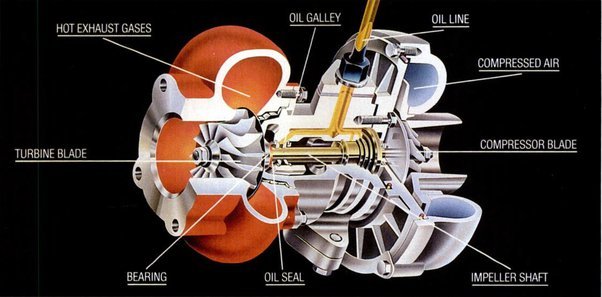
One of the crucial problems in turbo systems is turbocharger surging. Marine turbochargers perform a vital role in powering the engine and regulating the propulsion system. It requires smooth airflow to allow the exhaust gases to pass through the turbine wheel.
Surging blocks the air passage through the exhaust inlet and induces backpressure in the system. This can be identified by escalating noise and vibration in the system. Besides affecting the turbocharger performance, this can increase the temperature of the gases, cause the wearing of the internal parts, and unintended oscillations in the system.
In this edition of our Turbocharger series, we are offering a guide to turbocharger surging, causes, maintenance and solutions to prevent surging.
What is Surging in Marine Turbochargers
Surging is an operational phenomenon due to disruption in the exhaust gas flow, occurring in low-speed marine diesel engines. This happens when the compressor fails to bear the discharge pressure. It can occur when the pressure in the scavenge manifold surges higher than the air pressure in the compressor output. As a result, the air flows back to the suction from the discharge unit.
Causes of Turbocharger Surging
#1. Imbalance in the Turbocharger and Engine Capacity
Surging can happen if the capacity of the turbocharger is higher than the engine combustion cylinders. The high-capacity turbo system will create greater airflow into the combustion chambers than required. If the engine cannot handle the pressure, it triggers backflow of air into the compressor.
The causes of surging can vary from one vessel to another. A naval engineer can conduct an inspection and system audit to identify the issue.
#2. Faulty Injection
The cylinder configuration and functioning of the injection system can affect the functioning of the turbocharger. Check the operation in the injector parts. An imbalance in the cylinder power and injection system determines the amount of air pressure required per injection session. A mismatch in turbocharger air discharge and injection pressure can result in back pressure.
#3. Blockage in the Turbocharger Parts
The Marine turbochargers accumulate particulates and residue deposits through the constant processing of exhaust gases. Clogging in the hull, nozzle ring, air suction filter, valves, scavenge ports, and air-cooling chamber can result in surging. Chocked parts prevent free air passage and functioning of the parts at the same time.
#4. Faulty Operation in the Exhaust Gas Economizer
The economizer is responsible for regulating the thermal energy of the exhaust gases. A fouled economizer can trigger back pressure into the turbo system.
#5. Sudden Fluctuation in Engine Load and Speed
If the load and speed of the engine change suddenly, it can affect the air regulation in the turbo system. This is one of the prime causes of surging.
Measures to Prevent Turbocharger Surging in Marine Vessels
Conduct Regular Inspection and Maintenance
Inspection, overhauling, and maintenance schedules are eminent for all naval parts. Turbochargers are no exception. A marine engineer can inspect the individual parts and identify the underlying problems earlier than rising complications. Periodical maintenance as per recommended operation hours enhances safety, and performance, saves money on costly replacements, and guarantees 100% uptime.
Clean the Turbocharger Parts
A cleaning regimen is a must for air filters at frequent intervals. Moreover, water washing is mandatory for cleaning the compressor side and turbine.
Run Soot Blowing in Exhaust Boiler
Vessel owners must run the soot blower at the designated time to prevent choking. It keeps the boiler and economizer functioning at its best.
Are you looking for Cummins turbocharger parts?
Alfa Marine Spare Parts offers a vast range of turbo systems from world-renowned brands, including Cummins. From fully integrated marine turbochargers to minute spare parts, our inventory has stocks to fulfil orders of all sizes.
We regularly supply naval parts to shipbuilders, repair agencies, and boat owners. Contact us with the turbocharger part number, and we will handle the rest in 1-2 business days.







